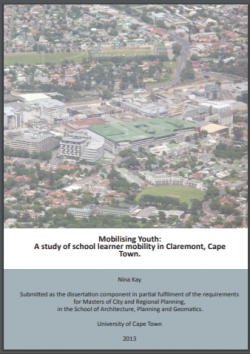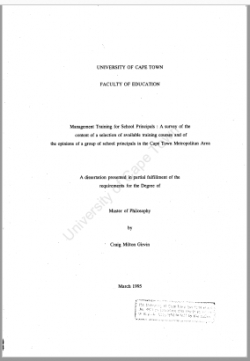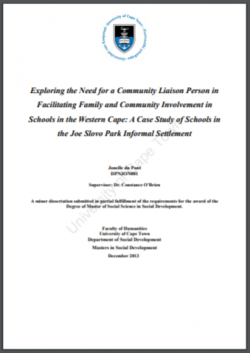Mobilising youth : a study of school learner mobility in Claremont, Cape Town

Type
Thesis
Authors
Category
ECCE, Foundation, Intermediate, Senior
[ Browse Items ]
Publication Year
2013
Publisher
URL
[ private ]
Pages
141 p.
Subject
Early childhood education, Children, Adolescents, Learners, Access to education, Transportation, Mobility patterns, Challenges, Spatial planning, South Africa
Tags
Abstract
South African cities have been shaped by the country's colonial rule, followed by the era of Apartheid. During Apartheid the majority of South Africans were forced to live on the periphery of cities far away from opportunities that were found in city centres, causing stark social, economic and spatial polarisation. Since the end of Apartheid many, including planners, have been attempting to address these imbalances across the country. One of these imbalances includes access to educational opportunities. There is a clear lack of research on learner transportation within South African cities and receives very little attention in legislation and policy. Learner mobility is, therefore, the focus of this study and the research aims to identify barriers to learner mobility and ways in which spatial planning can respond to these barriers. Objectives of the study, therefore, include identifying barriers and exploring learner mobility patterns and travel experiences. To conduct the study, surveys, field observations and a spatial analysis were undertaken within a local precinct in Cape Town, namely Claremont. Surveys were distributed to learners within the area in order to gather data on learner mobility patterns. The guiding spatial plan for Claremont, the Southern District Plan was critiqued and analysed along with the findings from the surveys to identify the barriers to learner mobility and the ways in which spatial planning can respond. The research revealed that the dominance of the private motor vehicle, the inability to integrate land use and transport planning, safety while travelling and the lack of youth participation in planning are the four critical issues that need to be addressed to improve access to education across Cape Town and overcome the barriers to learner mobility. If the interface between land use and transport planning could be implemented correctly and for the right reasons, with safety and youth participation in mind, social equity, spatial equity and increased accessibility to education can become a reality. It is hoped that this research is a useful contribution to begin the shift of the South African city to one that is more inclusive of its children through the use of spatial planning and can increase learner mobility and access to education.
Description
Thesis (MCRP)--University of Cape Town, 2013
Number of Copies
1
| Library | Accession No | Call No | Copy No | Edition | Location | Availability |
|---|---|---|---|---|---|---|
| Main | 823 | 1 | Yes |




